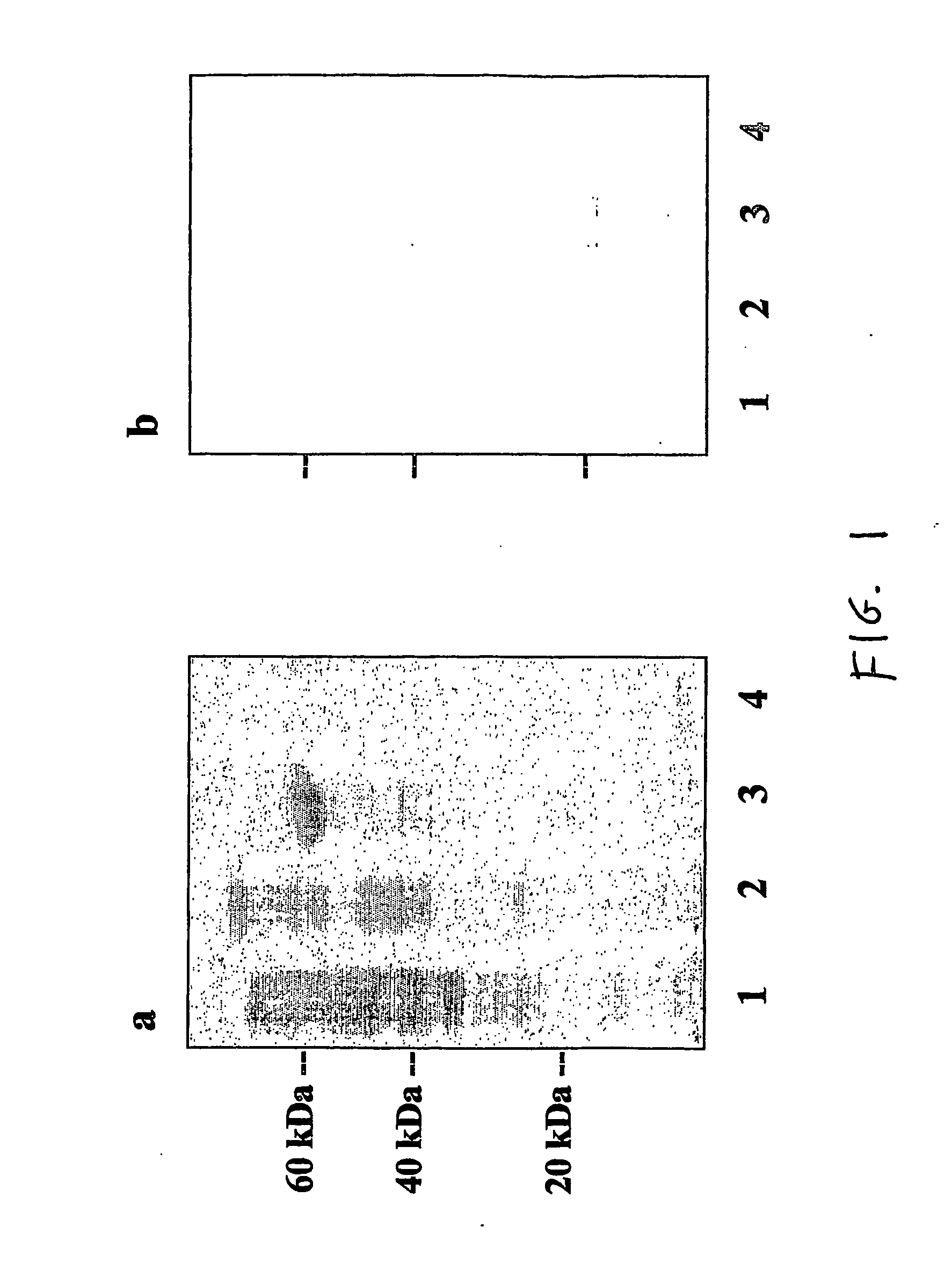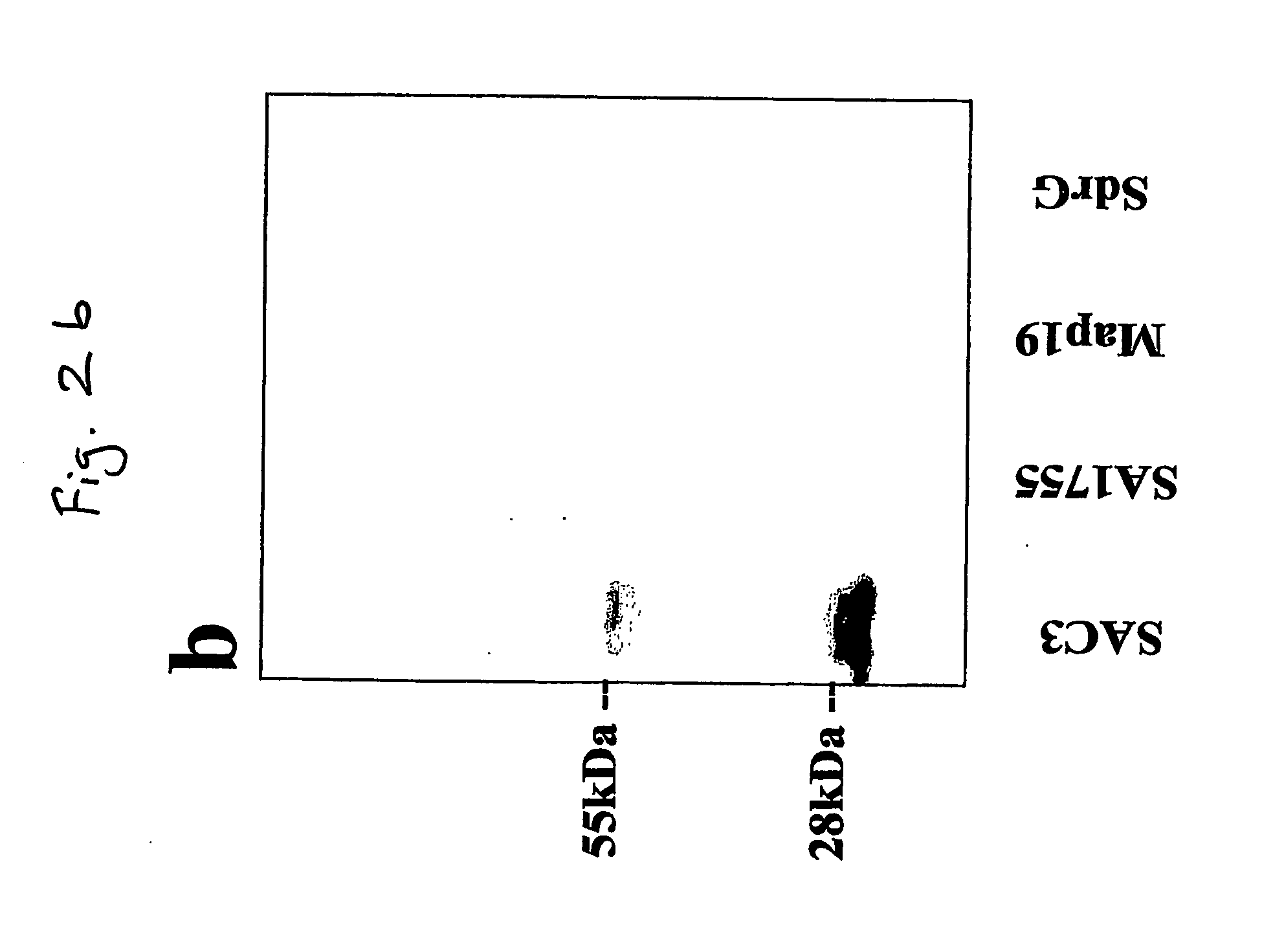Staphylococcus aureus efb protein and c3 binding region which inhibit complement activation
a technology of staphylococcus aureus and efb protein, which is applied in the field of staphylococcus aureus efb protein and c3 binding region which inhibit complement activation, can solve the problems of severe health threats in hospitals and communities, dramatic changes in their physiology,
- Summary
- Abstract
- Description
- Claims
- Application Information
AI Technical Summary
Benefits of technology
Problems solved by technology
Method used
Image
Examples
example 1
Isolation and Identification of the SAC3 (Efb) Protein and Confirmation of its Complement Inhibiting Activity
Overview
[0059] We have identified a 19 kDa protein secreted by SA that can bind to the complement protein C3 and have designated this protein SAC3 (S. aureus C3-binding protein). N-terminal sequencing of SAC3 identified this protein as the SA extracellular fibrinogen-binding protein (Efb) (31-33). Efb is a constitutively secreted protein that not only binds Fgn, but can interfere with platelet aggregation and is hypothesized to play a role in delaying wound healing (34). The data presented in this report show that SAC3 is a MIM that may be involved in SA survival and persistence.
Materials and Methods
[0060] Identification of SAC3. Escherichia coli strain JM101, Staphylococcus carnosus strain TM300, and Staphylococcus aureus strain Newman were grown under shaking conditions overnight at 37° C in 5 ml Lennox broth (Sigma-Aldrich, St. Louis, Mo., USA) as described previously...
example 2
Experimental Procedures for Isolating the C3 Binding Region of EFB
Overview
[0144] The secreted S. aureus extracellular fibrinogen-binding protein (Efb) is a virulence factor that can bind to the complement component C3 and fibrinogen. We have previously demonstrated that the binding of C3 by Efb inhibited complement activation and blocked opsonophagocytosis. In this study, we have identified and characterized the C3-binding region of Efb. By using truncated recombinant forms of Efb we confirmed that the C3-binding region of Efb is located in the C-terminal region of the protein in contrast to the fibrinogen-binding region which is located in the N-terminal region. Furthermore, we have identified the minimal Efb-binding region in C3 to the C3d fragment. Because Efb can bind to both C3,and fibrinogen, the possibility that binding to both ligands occurred simultaneously was examined. Data presented in this report suggest that Efb can bind to C3 and fibrinogen at that same time to for...
PUM
| Property | Measurement | Unit |
|---|---|---|
| Composition | aaaaa | aaaaa |
| Immunogenicity | aaaaa | aaaaa |
Abstract
Description
Claims
Application Information
 Login to View More
Login to View More - R&D
- Intellectual Property
- Life Sciences
- Materials
- Tech Scout
- Unparalleled Data Quality
- Higher Quality Content
- 60% Fewer Hallucinations
Browse by: Latest US Patents, China's latest patents, Technical Efficacy Thesaurus, Application Domain, Technology Topic, Popular Technical Reports.
© 2025 PatSnap. All rights reserved.Legal|Privacy policy|Modern Slavery Act Transparency Statement|Sitemap|About US| Contact US: help@patsnap.com



